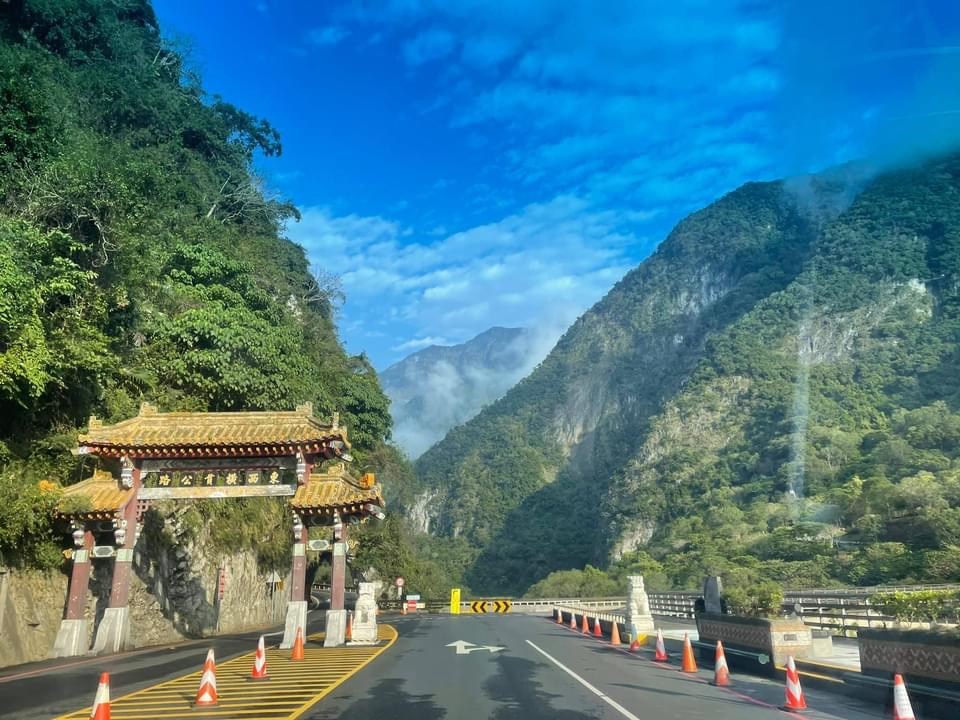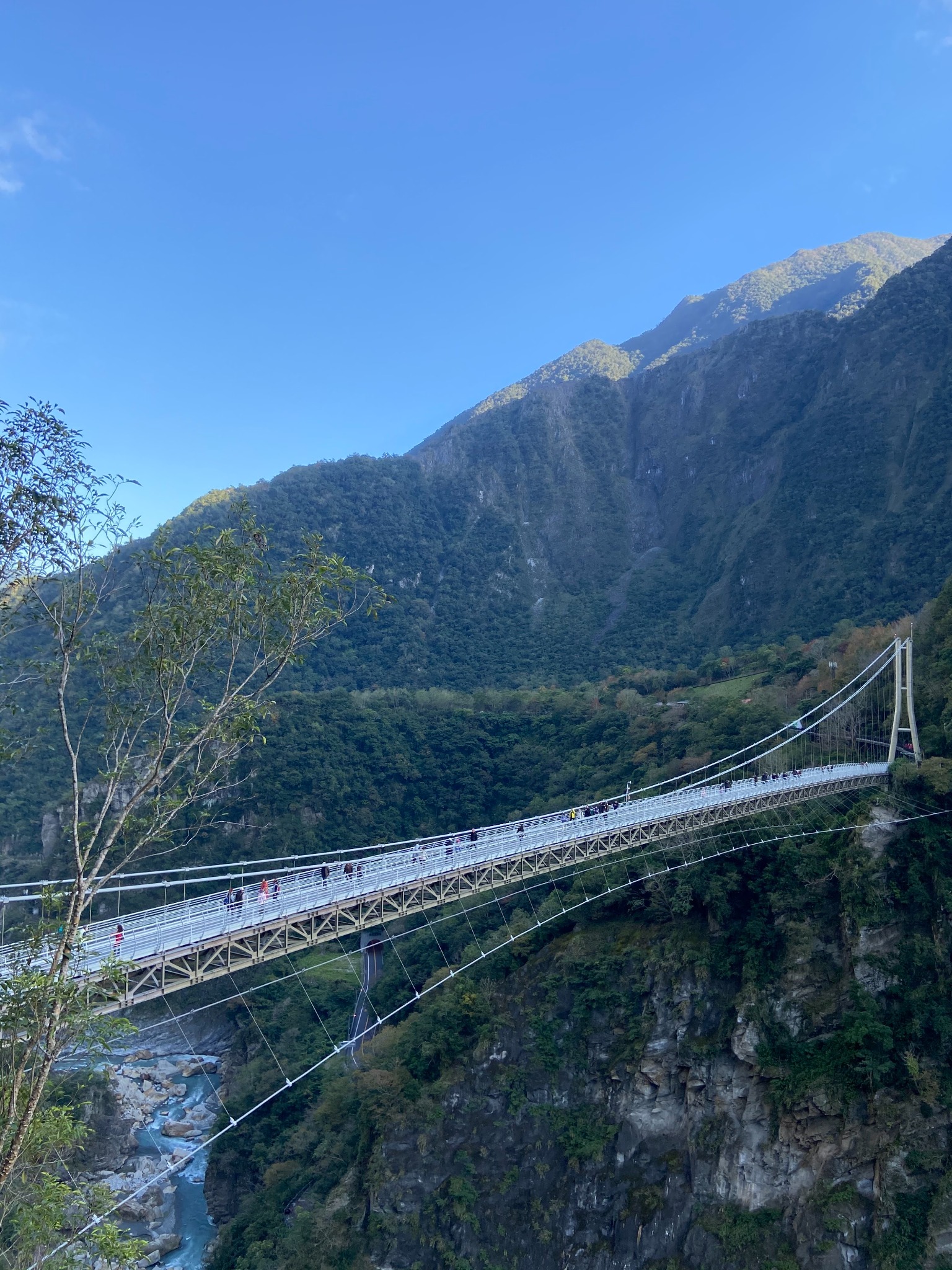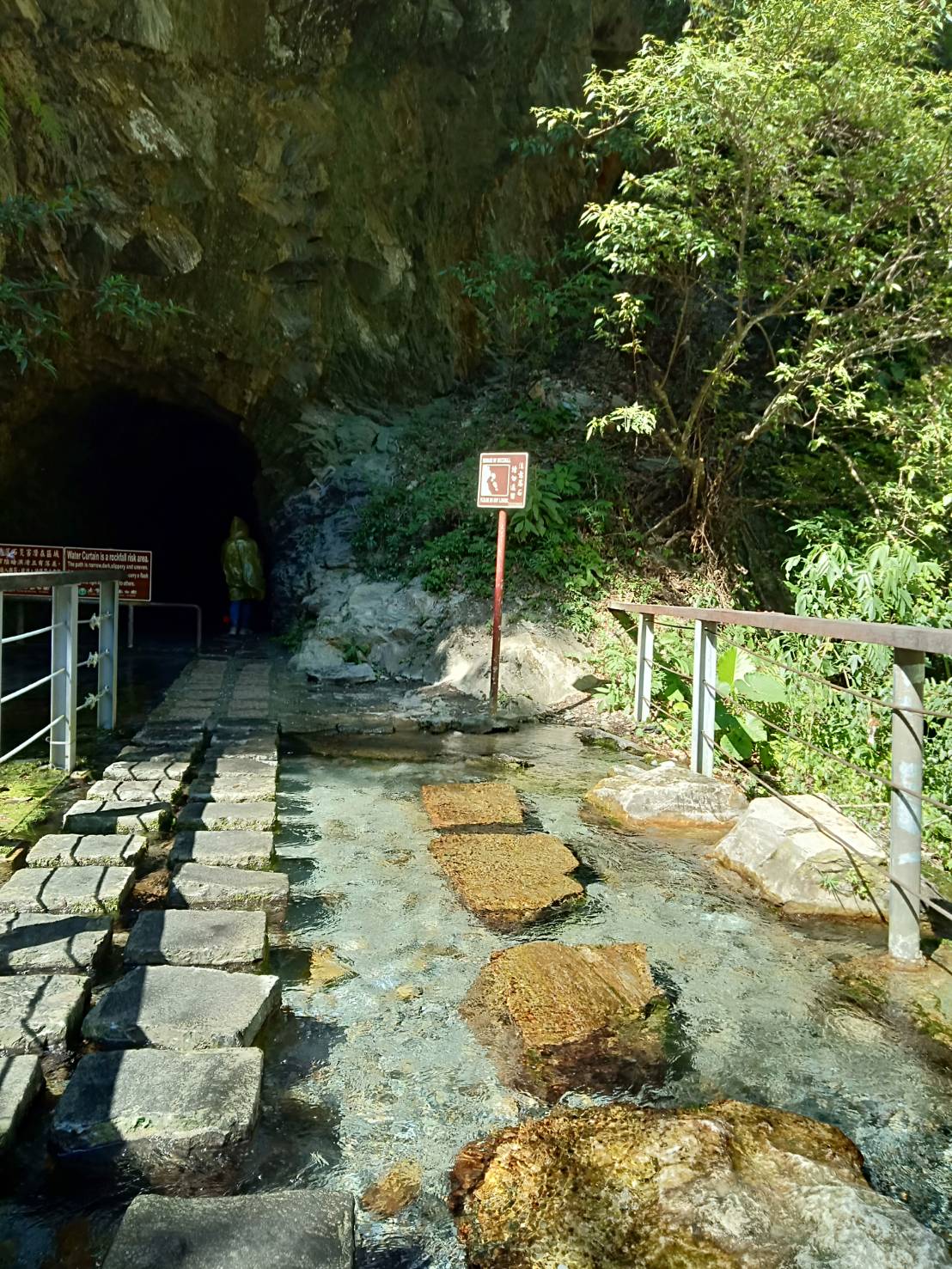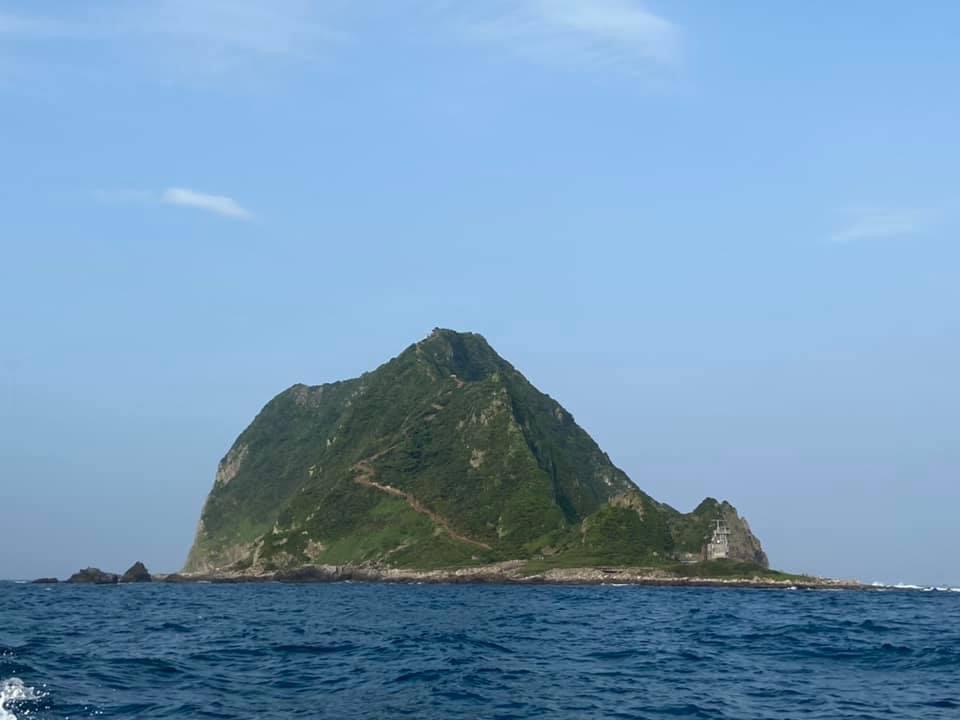7 DAYS
Greetings for Arrival
Transfer to Taipei
Morning:
Taipei 101 / Chiang Kai-Shek Memorial Hall / Longshan Temple
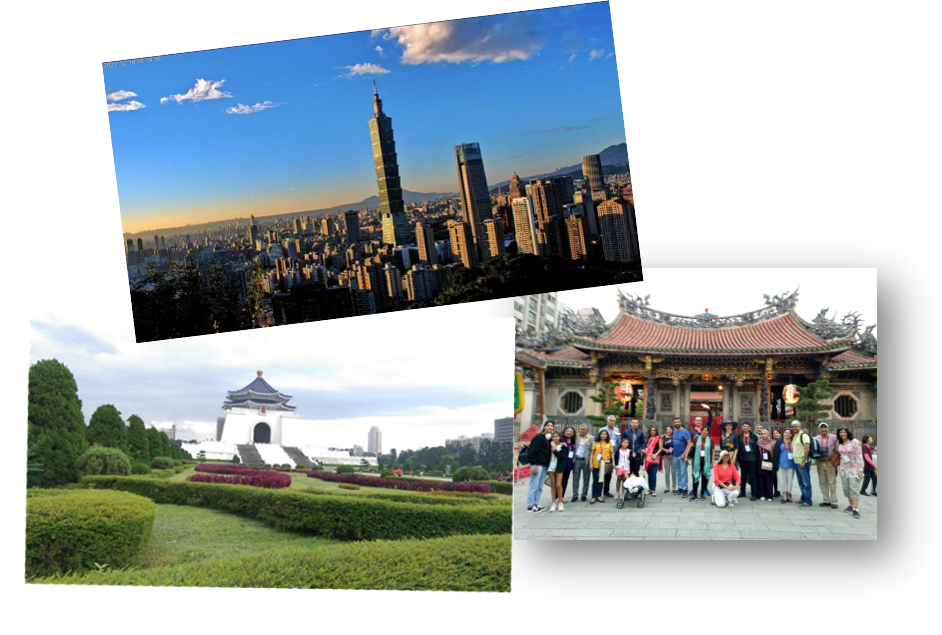
Afternoon:
Yangminshan National Park /Beitou Hot Spring Museum
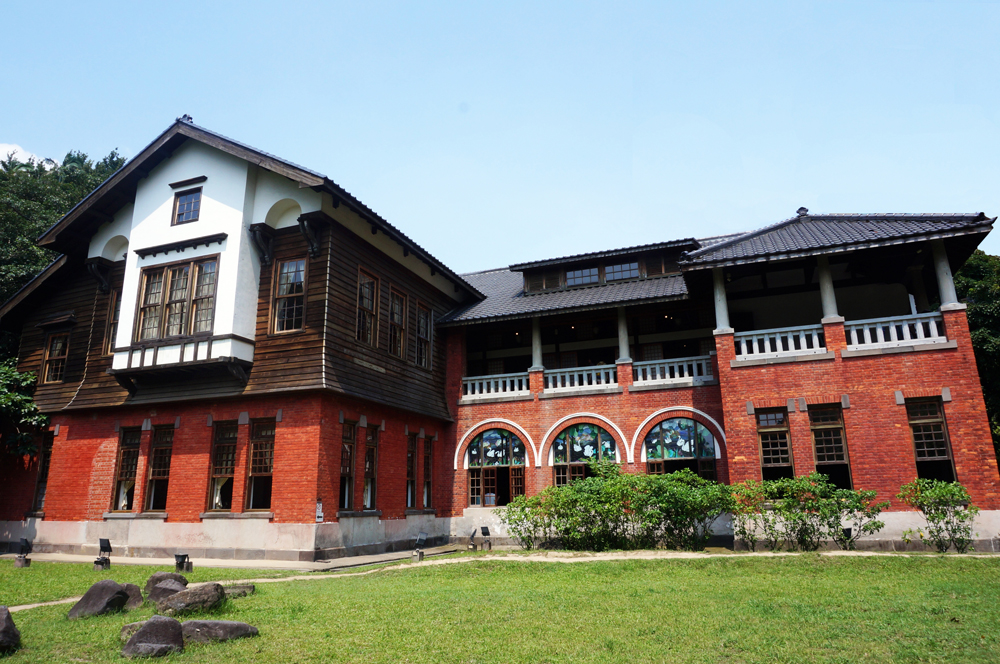
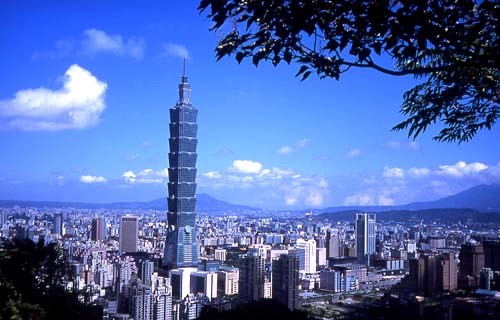
Taipei 101
The Taipei 101 is designed to resemble a growing bamboo stalk, a symbol of everlasting strength in Chinese culture.
Taiwan doesn't have many ostentatious records in its history, but Taipei 101, designed by local architect C.Y. Lee, brings one.
It was the first skyscraper to go past the half-kilometer mark and it sat at the pinnacle of the skyscraper world from 2004 to 2009.
Taipei 101 can also claim to have the world's fastest passenger elevator.
At an ear-popping 1,010 meters per minute, it takes 37 seconds to catapult passengers from the fifth floor to the highest point in Taiwan.
-
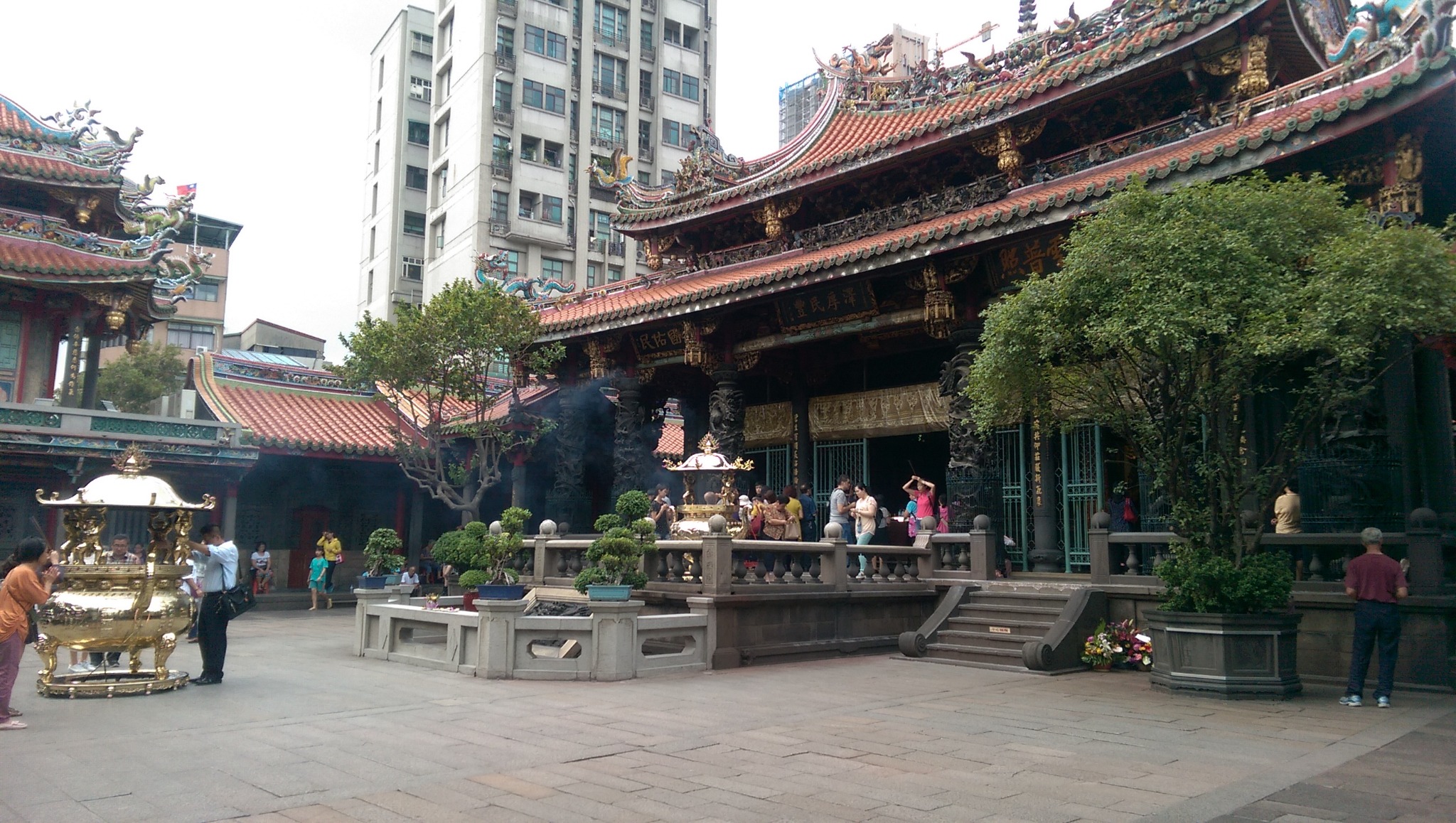
Longshan Temple
The Long Shan Temple originated its name from the ancient Lungshan Temple established in Chin-chiang county of Fukien province in the seventh century. Immigrants from the three counties Chin-chiang, Nan-an and Hui-an of Fukien came to Manka in the beginning of the eighteenth century.
-
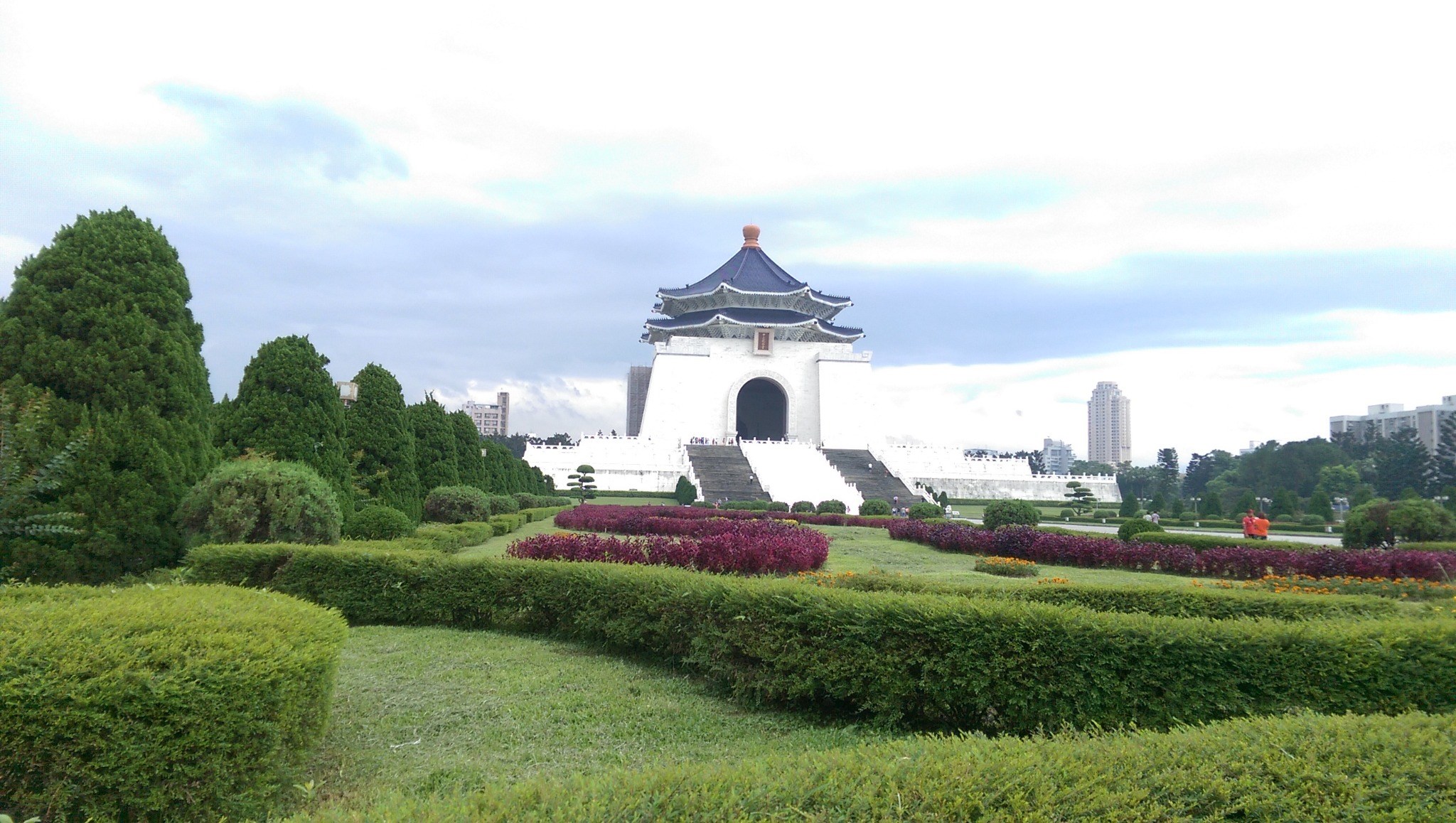
Chiang Kai-Shek Memorial Hall
The most prominent historical landmark in Taiwan, the CKS Memorial Hall was erected in honor and memory of Generalissimo Chiang Kai-shek, the former President of the Republic of China, and was opened in 1980 as part of a national park and gathering area.
The name of the square is officially Liberty Square (自由廣場), as seen above the front gate, however the name change was politically motivated and most people in practice still refer to the entire complex as CKS Memorial Hall.
The octagon-shaped white building rises 76 meters and is covered with blue tiles and red accents, echoing the flag of the Republic of China. The eight sides represent the Chinese cultural symbolism of the number eight which is traditionally associated with fortune and wealth. The two sets of 89 steps represent Chiang's age of death and lead up to main hall housing a large bronze statue of Chiang protected by military personnel which change hourly.
The characters behind Chiang's statue read "Ethics", "Democracy", and "Science", and the inscriptions on the side read "The purpose of life is to improve the general life of humanity" and "The meaning of life is to create and sustain subsequent lives in the universe".
Below the hall is a museum documenting Chiang's life and career, as well as exhibits about Taiwan's history, pan-Chinese culture and history, and the ROC's development after moving to Taiwan. -
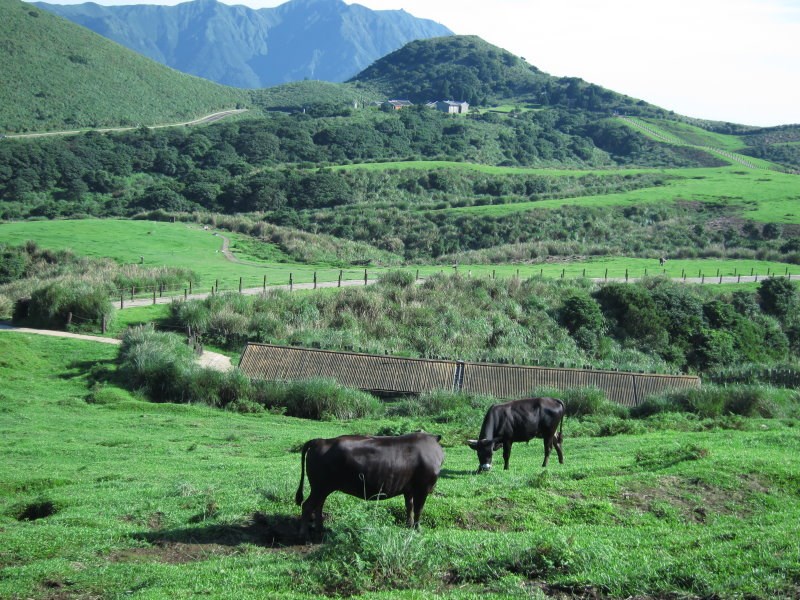
Yangminshan National Park
Yangmingshan National Park is located in the north of Beitou. Yangmingshan was called Caoshan (Grass Mountain) during Japanese occupation of Taiwan, because it was covered with grass and seldom visited. After World War II, the KMT government renamed the mountain Yangmingshan and built a park here. Yangmingshan National Park is the only park in Taiwan that has volcanic geography and hot springs. It is next to Shamao Mountain and Qixing Mountain with Datun Mountain on the right and Guanyin Mountain in front. The magnificent mountainous scenery and comfortable weather have made Yangmingshan National Park a perfect summer resort. Total area of the park is 125 hectares, designed in traditional Chinese style. The natural beauty of the part has won it the reputation as urban forest and the Taipei garden.
The park is characterized by a large clock made of flowers with a diameter of 22 feet. Water runs around the flower clock and music is played every hour. The clock is the characteristic of Yangming Park. Opposite the clock is a statue of late president Chiang Kai-Shek; on both sides of the statue are the cypresses planted by president Chiang himself. The Xinhai Guangfu Building was completed in 1971, right in the center of the park. In addition, there is a statue of Wang Yang Ming, the famous Chinese scholar in the 17th century.
-
-
v
v
-
4-star or 5-star hotel in Taipei
Breakfast at Hotel
Check out and transfer to Hualien
Qingshui Cliff
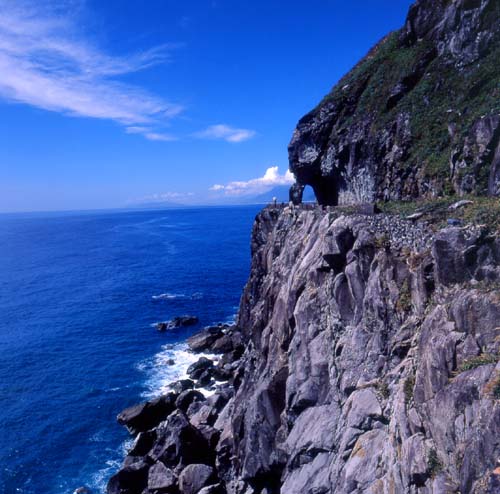
After Lunch to visit National Taroko Park
Shanyui suspension Bridge - Eternal Spring Shrine - Shakadang Tail
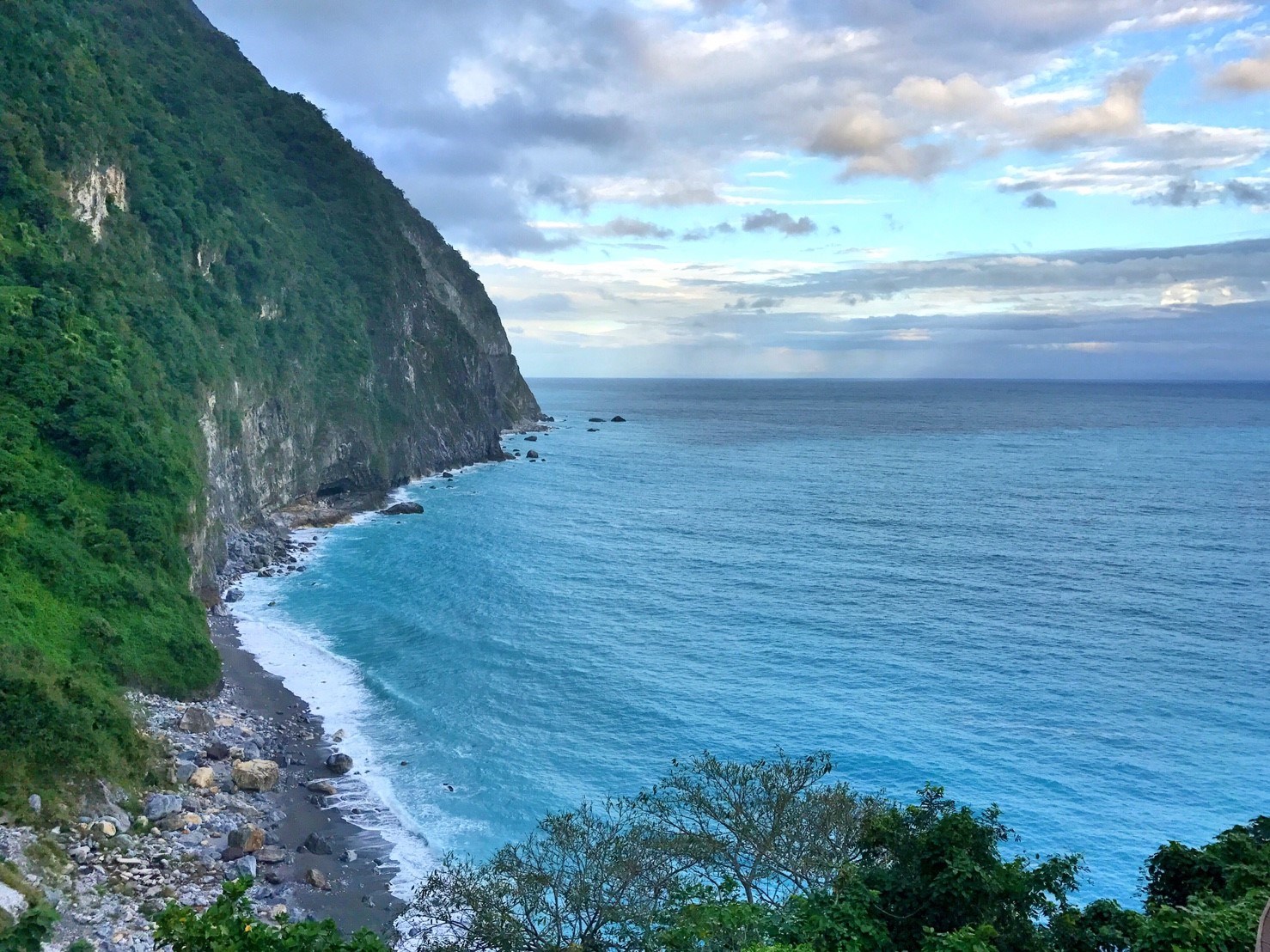
Qingshui Cliff
Qingshui Cliff, located on the section of the Suao-Hualien Highway that stretches between Heping and Chongde stations, is one of the most spectacular sights on Taiwan's Pacific coast. The cliff is more than 1,000 meters high and drops almost vertically into the sea. The highway snakes along its curving face more than 20 kilometers, with the sheer cliff rising on one side and a sheer drop to the ocean on the other.
-
shanyuei suspension bridge
"Shanyue Suspension Bridge" crosses the Liwu River from the Buluowan terrace and overlooks the magnificence of Taroko Gorge from a high perspective. It will be renamed! The "Taroko National Park Indigenous Area Resources Co-management Association" (hereinafter referred to as the "Co-management Association") has decided to change the name of the Shanyue Suspension Bridge to "Buluowan Suspension Bridge," adhering to the traditional name of the local Taroko people. Taroko National Park has gradually updated the signage and website information. Further publications will follow the new bridge name. Due to the adjustment of the online reservation system of the suspension bridge, reservations will be temporarily suspended from 9:00 am to 12:00 pm on May 16, 2022.
Some members proposed to restore the traditional place names to that of the Truku tribe during the joint management committee held last year. Respecting the wishes of the local people and the historical/cultural connotation of the Truku people, the name change to "Buluowan Suspension Bridge" was enacted by Taroko National Park HQ.
Buluowan Suspension Bridge (formerly known as Shanyue Suspension Bridge) is 196 meters long and 153 meters above the Liwu Valley. It officially opened on August 12, 2020. It is a barrier-free suspension bridge, accessible for wheelchairs and strollers. It is suitable for tourists of all ages. The bridge provides a great perspective of the Taroko Gorge, and it has become a popular attraction for many tourists since its opening. -
National Taroko Park
When Taroko National Park was established on November 28, 1986, it was of special significance for the environmental protection movement in Taiwan: it showed that both the public and the government agencies had realized that against the background of the nation's four decades of extraordinary economic success, serious damage was being done to its natural resources. According to the National Park Act of the Republic of China (passed in l972), parks are established to protect the natural scenery, historic relics and wildlife; to conserve natural resources; and to facilitate scientific research and promote environmental education.
Taroko National Park, situated in the eastern part of the Taiwan and established on November 28, 1986, covers more than 92,000 hectares in the northern section of the Central Mountain Range. This park features high mountains and sheer gorges. Many of its peaks tower above 3,000m in elevation, with many natural wonders. The spectacular Taroko Gorge and the scenic beauty of Liwu River can be conveniently viewed from the Central Cross-Island Highway. The varied mountain peaks, numerous waterfalls, diverse plant forms and animal life, together with the indigenous Taroko people, create the rich texture of this unique natural ecosystem. -
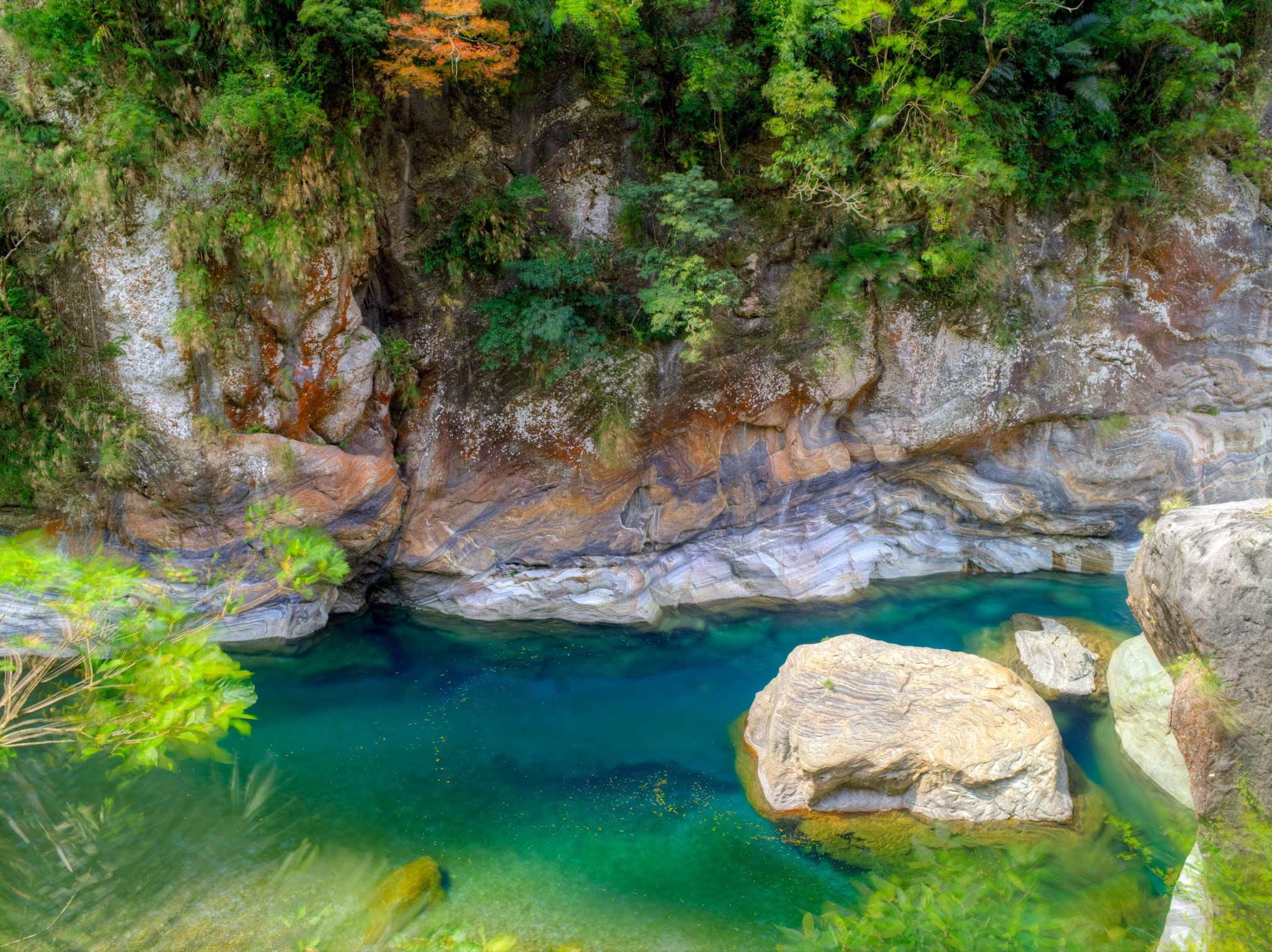
Shakadang Trail
Shakadang Trail is also known as "Mysterious Valley Trail" and was renamed to "Shakadang Trail" in 2001. This trail is built along the river cliff so travelers can easily observe both the rock folds and plant ecosystem beside in the river valley. After 4.1 km you will arrive at 3D Cabin –phonetic sound Sanjianwu, which is the favorite of visitors. After the first curve there is a deep pool with clear water that has enchanted many visitors. In May, it is the season when Tung tree flowers bloom, making the trail a pleasant flower hallway with flowers filling the air like snow flakes.
-
v
v
v
-
Taroko Village Hotel or Silks Place Taroko
Breakfast at Hotel
Morning :
Baiyang Trail - Baiyang Waterfall
Afternoon:
Lushui/Heliu Trail
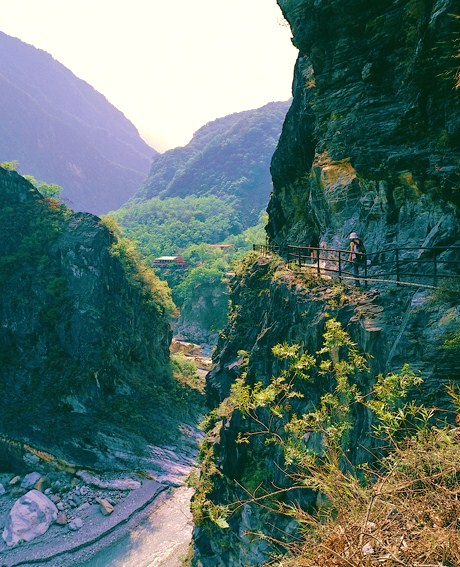
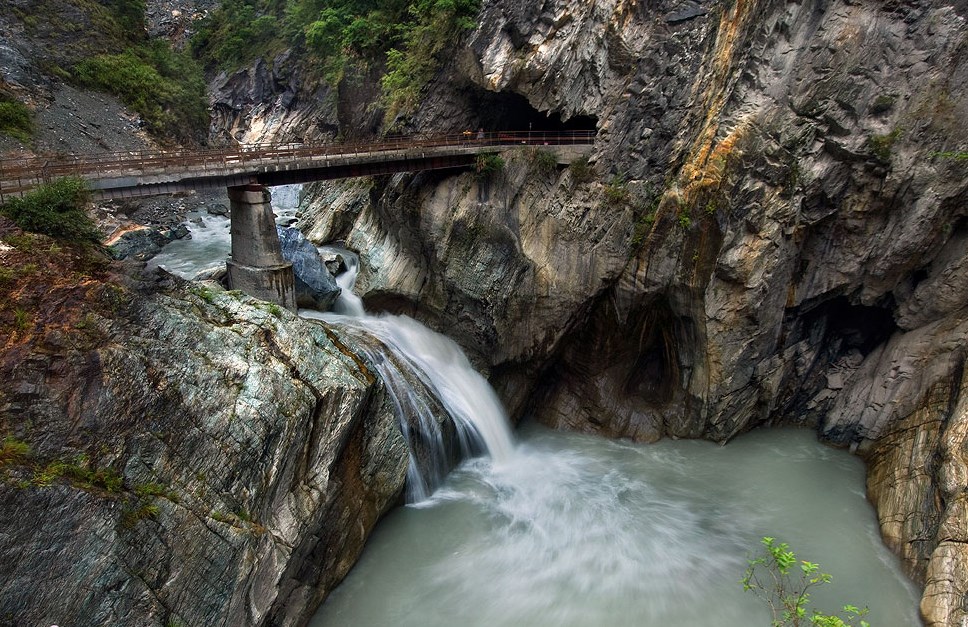
Baiyang Trail
The entrance of the Baiyang Trail is located about 300 meters from Tianxiang on the Central Cross-Island Highway. Near Wen Mountain (Wenshan), hikers will come upon the tunnel that is the beginning of the Baiyang Trail. Along the trail there are six tunnels of different lengths that provide a certain frisson as groups feel their way through the semi-darkness. The longer tunnels have solar-powered lights. This trail is particularly popular with locals, for it has an atmosphere of mystery and romance. A turn in the trail at the end of the third tunnel offers an excellent view of Tacijili River, and at the end of the sixth tunnel the truly spectacular goal of the trail, Baiyang Waterfall, comes into view. The water roars as it plunges into the deep pool that it has worn in the rock. The Baiyang Suspension Bridge offers spectacular views of the waterfall and the river valley. A seventh tunnel leads to a cave behind the falls; because of the danger of falling rocks, this area is closed to the public. Although this trail is not physically challenging, additional clothing may be necessary to ward off chilly air in the vicinity of the Baiyang Waterfall and back takes approximately 1.5 hours.
lushui/Heliu Trail
Lushui Trail was part of the Old Cross-Hehuan Mountain Road. The width of the path is about 2 meters which is about the same as during the Japanese Era (1895-1945). The trail has a gentle slope and is easy to walk. It is a sight-seeing path that is suitable for all ages. There is a 30 meter tunnel along the trail, so please bring a flash light.
Dense forest, cliff terrain, plants growing on the rock and historical monuments are the characteristics of the Lushui Trail. You can view the historical monuments of Taroko National Park and observe the special botanical ecosystem. Walking on this historic path you follow in the footprints of earlier people.
Standing on the cliff, you overlook the Liwu River valley and the Lushui terrace. There are plants growing on the rocks that symbolize vitality. Among those plants, the Taroko oak is a rare species in Taiwan.

-
v
v
v
-
Silks Place Taroko
Breakfast at Hotel
Check out and transfer for 1 day tour
Morning:
Tunnel of Nine Turns / Swallow Grotto
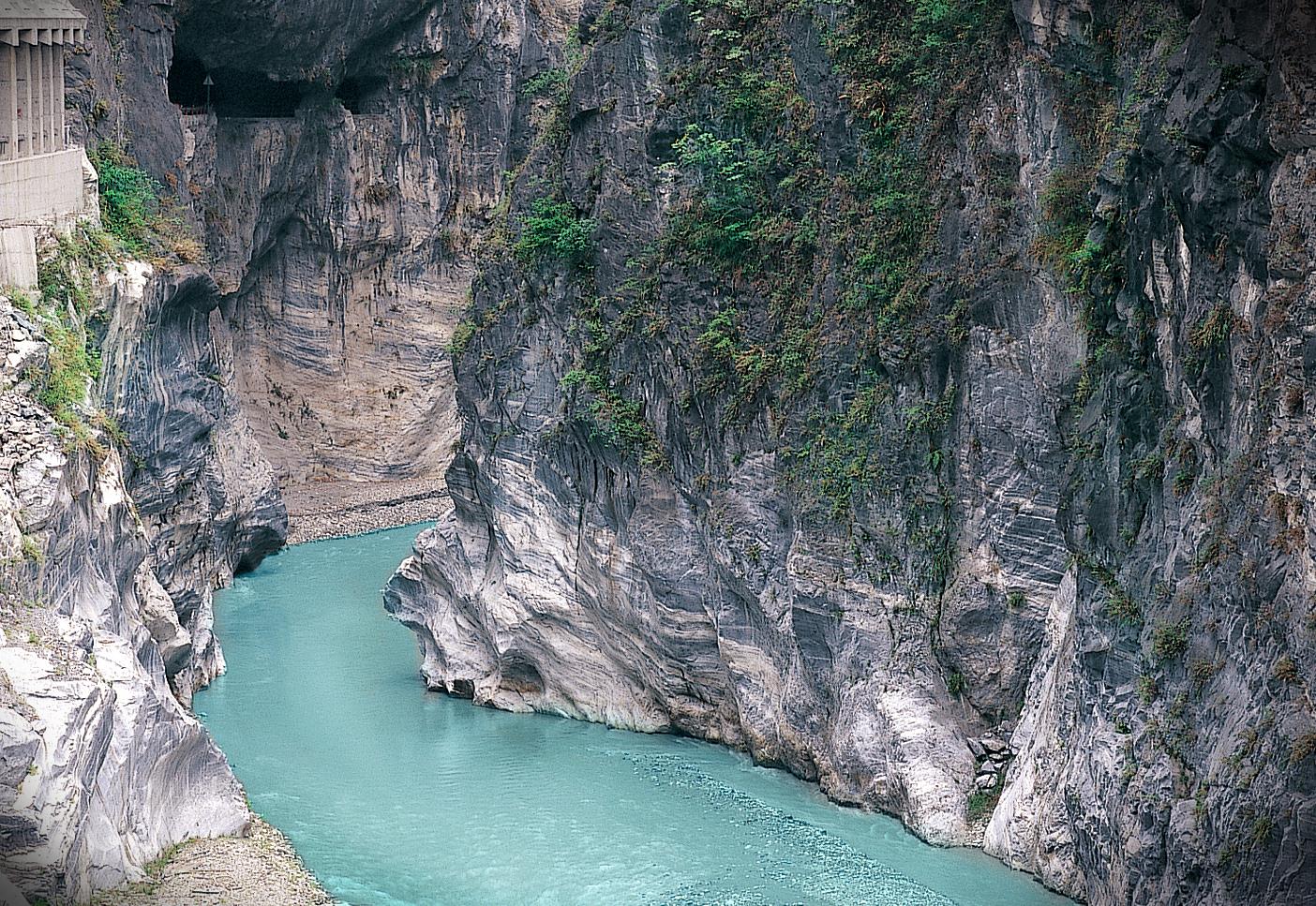
Afternoon:
Lanyan Museum/National Center for Traditional Arts
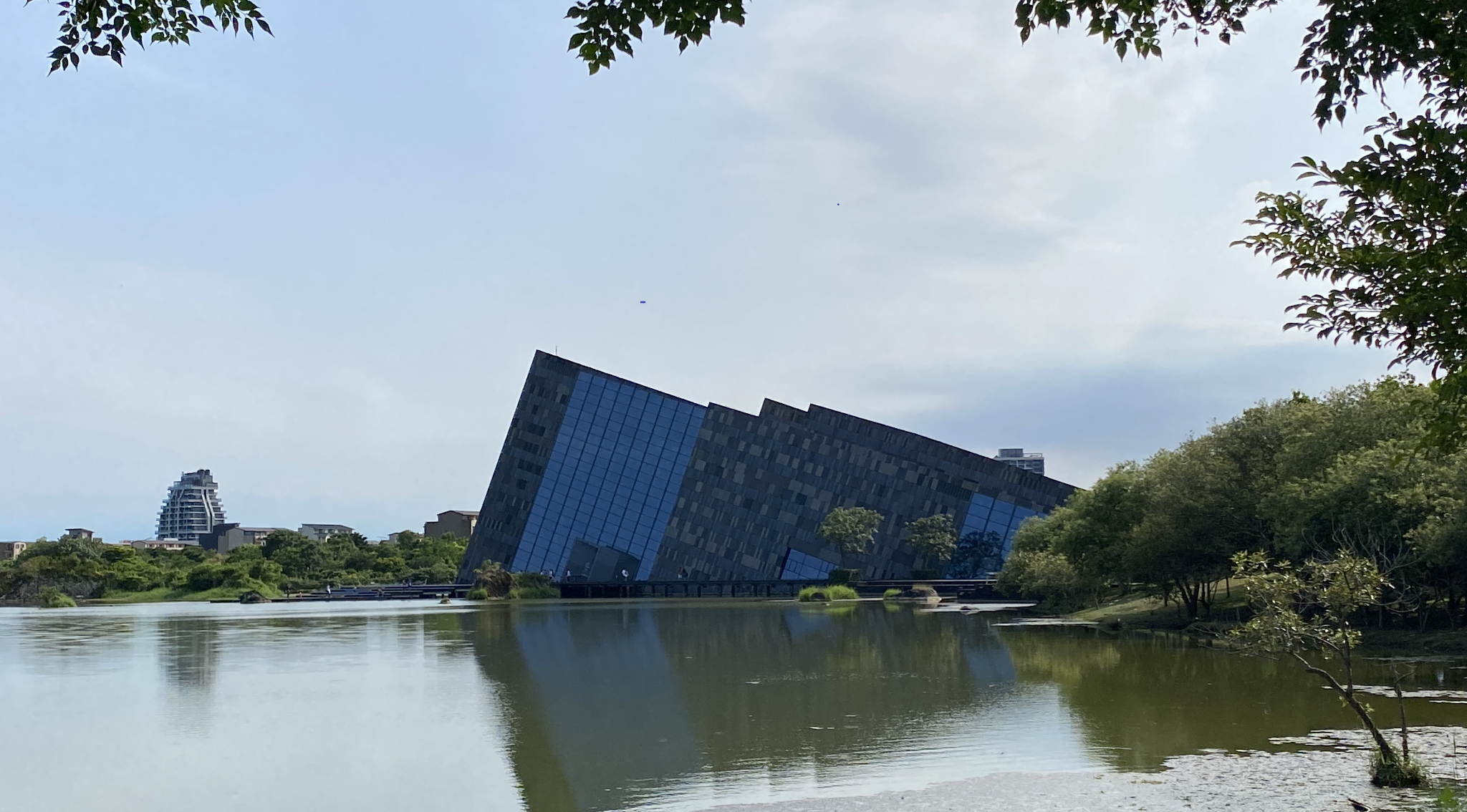
Swallow Grotto
This part of Taroko Gorge is composed of marble cliff faces covered with small holes, the result of long-term erosion by river and ground water. House swifts and Pacific swallows often forage and nest here, giving the place its name.
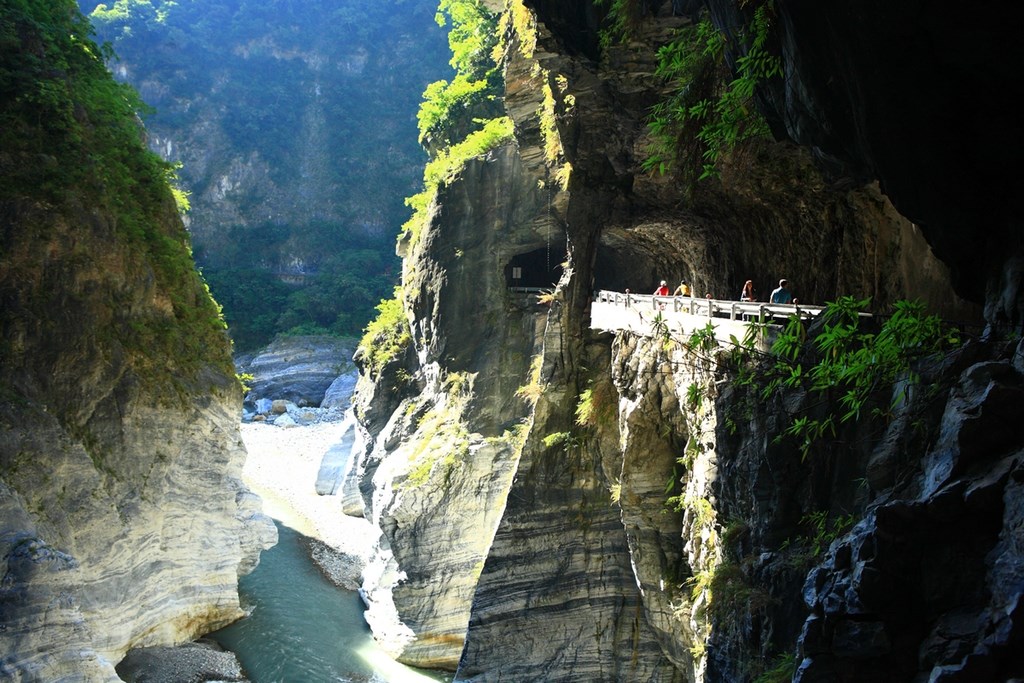
Tunnel of Nine Turns
The tortuous course cut by the river has produced a gorge of many curves, and the path of the highway that has been carved out of the cliff face here seems to be an endless aerie of turns. Hence the name, the gorge is so narrow that only a very narrow width is open to the heavens, in what the Chinese call "a thread of sky." The marble cliff face opposite the highway varies in color from deep gray to pure white in a multitude of changing designs. A walk through the Tunnel of Nine Turns takes about 30 minutes and gives access to enchanting scenes of the gorge, the river, stone strata, the tunnel itself, and the surrounding vegetation. This is one of the most scenic parts of the gorge, and the best place to observe the gorge's ecology.

Lanyang Museum, Yilan
Yilan itself is a museum
Rich in both natural and cultural resources, the Lanyang Plains are characterized by ecological and ethnic diversity, warm and friendly people, and a vibrant culture. It is said that Yilan itself is a museum and we believe the Lanyang Museum serves as a sort of window to those wishing to learn more about Yilan. The Lanyang Museum's mission is to bring together Yilan's local resources through books and displays as well as tourism and recreation to promote activities of museums throughout the county to ensure the sustained development of "the museum that is Yilan."
At Yilan's cultural and historical epicenter
The Lanyang Museum is located on the site of Wushi (Literally, "black rock") Port which during the Qing Dynasty bristled with the masts of the vessels coming and going. The harbor was not only an artery for the physical materials needed by the people of Yilan, it was an important hub of cultural exchange with the outside world. The Lanyang Museum was erected on this site to symbolize the fact that culture in Yilan is breaking new ground and reaching new heights and milestones.
One with the land
You might be curious as to why our building looks so different. The architecture of the Lanyang Museum was inspired by natural elements found locally. Architect Kris Yao incorporated the cuesta, a gently tilting stone escarpment common to Taiwan's northeast coast, into the building's design, allowing structure to blend into the natural environment. From a distance, it resembles a huge black rock; up close, you discover a place of unique beauty that coexists in harmony with the land.
Permanent displays
Upon entering the Lanyang Plains, you note the blending of mountain and sea. In the museum's exhibition area, therefore, we have set up displays reminiscent of the geographical and spatial characteristics of Yilan. They hint at the local mountains, plains, and ocean and convey the idea of interacting with the environment.
The permanent displays, which take advantage of the building's special characteristics, include the Introductory Exhibition as well as the Mountain Level, Plain Level, Ocean Level, and Time Corridor Exhibitions spread over the building's four floors and suggesting Yilan's overall geographical and cultural context.
-
v
v
v
-
4-star or 5-star Hotel in Yilan or JiaoXi
Breakfast in Hotel
0900 check out and transfer for 1 day tour
Morning : Northeast Yilan Coast / Yehliu Geopark
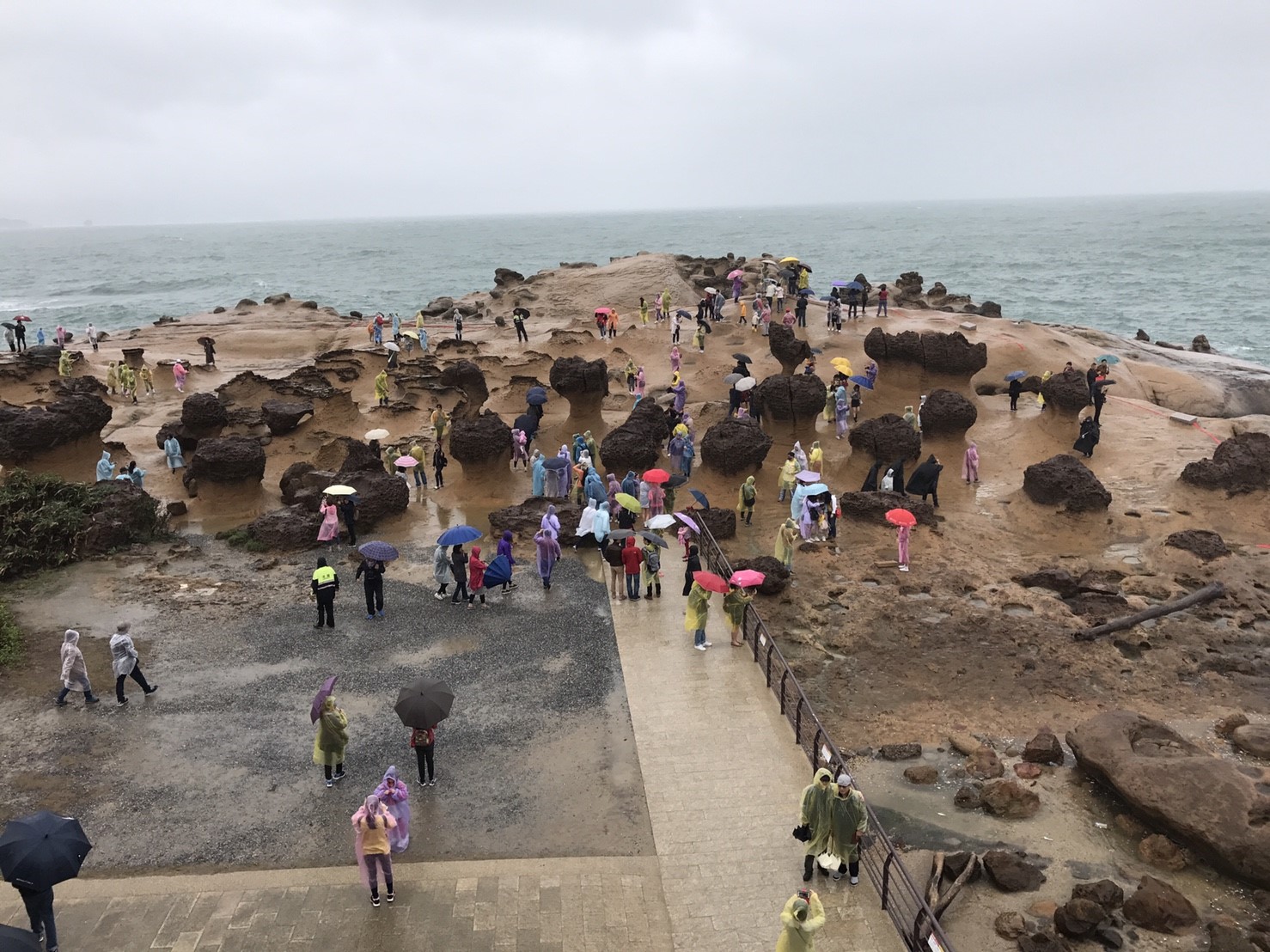
Afternoon: Keelung ChengBin Fish Port/ Heping Ocean Park / Temple (Miaoko) Night Market / Taipei
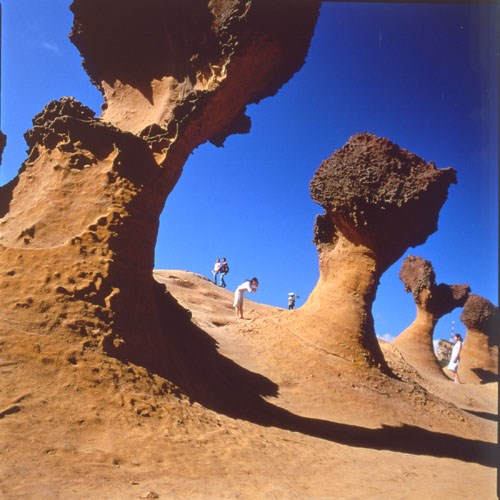
Yehliu Geopark
One of the premier destinations in northern Taiwan, Yehliu Geopark is home to a number of unique geological formations including the iconic "Queen's Head", and is located along a cape stretching out from the town of Wanli.
Part of the Daliao Miaocene Formation, the cape stretches around 1,700 meters, formed as thousands of years of geological movement forced the Datun Mountains to change their shape, jutting out into the ocean.
Besides the Queen's Head, other remarkable formations include Sea Candles , Fairy Shoe , Ginger Rocks, Elephant Rock, Ice Cream Rock, Kissing Rock, and Princess' Head.
Next to the geopark is the Yehliu Ocean World , which is an oceanarium with ocean exhibits, and sea life including dolphin and sea lion performances.
The Northeast Coast National Scenic Area
The Northeast Coast National Scenic Area is located in the northeast corner of Taiwan, stretching 102.5 kilometers from Nanya District in New Taipei City to the south cape of Neibi Beach in Su'ao Township. It encompasses 17,130 hectares of land and sea.
This scenic area is noted for its numerous capes and bays backed by green mountains. Its attractions include spectacular rock formations, unique sea-eroded landforms, beaches of fine golden sand, a rich diversity of marine life, and an unspoiled cultural heritage. It is a multipurpose tourist destination that serves the dual functions of a fascinating natural classroom and an enchanting coastal playground. The Tourism Administration established the Northeast Coast National Scenic Area Headquarters in 1984, charging it with the development and management of the area's tourism resources as well as the preservation of its environment. In addition to developing areas of outstanding scenic beauty as tourist items, the Tourism Administration has also established nature preserves here, both on land and at sea, in order to sustain forever the ecological vitality of the Northeast Coast.
The Northeast Coast National Scenic Area, which runs from Juifang south to Beigangkou in Yilan County, is noted for its natural beauty: reefs, rivers, terraced rice paddies, rolling green hills, lighthouses, and two of Taiwan's best beaches. Recreational opportunities include camping, rock climbing, hiking along a 200-year-old footpath, and water sports, such as swimming, surfing, wind surfing, jet skiing, boating, snorkeling and scuba diving.
-
v
v
v
-
4-star or 5-star hotel in Taipei
Breakfast at Hotel
Morning:
Miaokung Gondala / Miaokung Tea House / Taipei Zoo
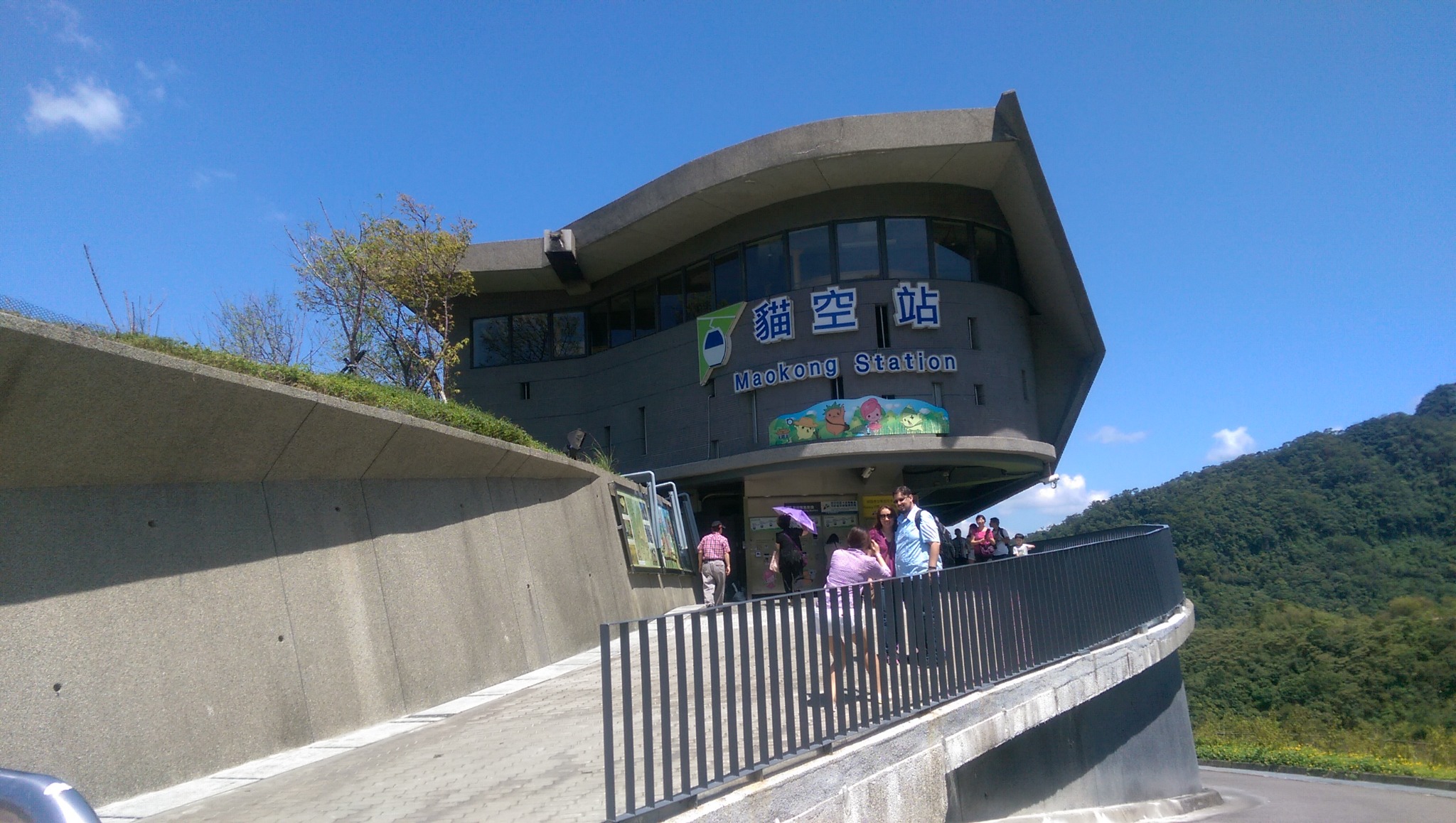
Afternoon:
PingXi Lantern Trip - Make a wish(Lantern releasing) / Lantern Police Station / PingXi Line Train / PingXi Old Street/Shihfen Old Street
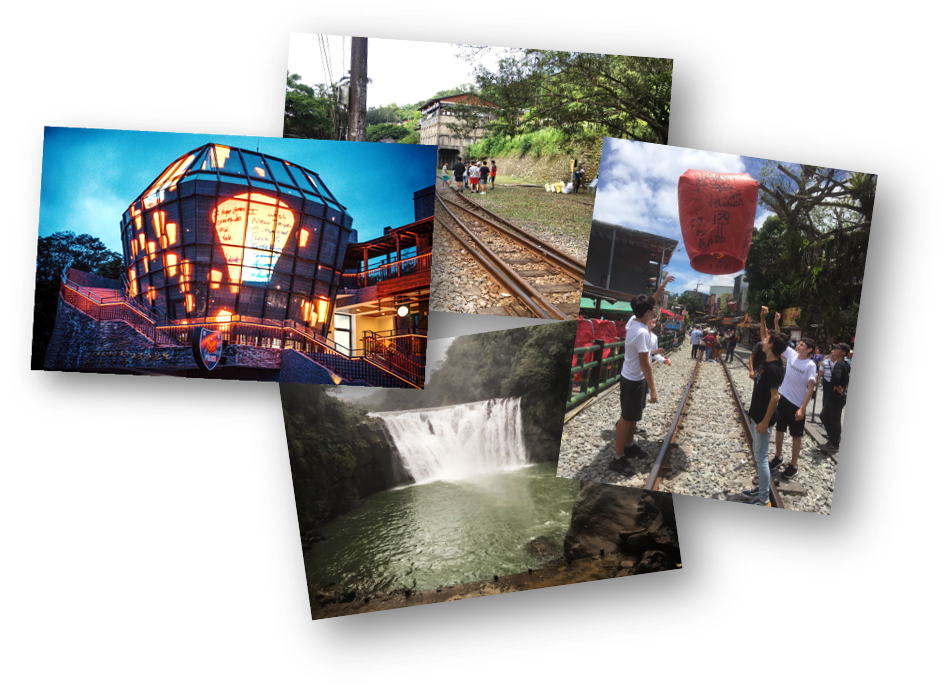

Maokung Gondola
Located in the southern tip of Taipei City, Maokong has evolved into a favorite tourist destination for locals and visitors, who go there to visit its tea plantations and tea houses.
The construction of the Maokong Gondola began on November 10, 2005, and the system began operation in July 2007. It is Taipei City's first high-altitude gondola. This French POMA-made system makes a circuit of four stations: Taipei Zoo Station, Taipei Zoo South Station, Zhinan Temple Station, and Maokong Station. There are also two angle stations where the gondola changes direction.
PingXi Lantern
Taiwan' Pingxi Sky Lantern Festival is ranked among the 15 Festivals to Attend Before You Die
Tradition has it that the “sky lantern” was invented during the Three Kingdoms period (AD 220-265) by Zhuge Liang. At first it was used to transmit military information, different from beacon towers yet ingeniously serving the same function, and is now generally recognized as the earliest ancestor to the hot air balloon. In the early 19th century the Lantern Festival was brought to Taiwan, where every year, at the beginning of the spring planting season, people would release “sky lanterns” into the air as a prayer for the coming year. Because in olden times marriage was for the purpose of “adding a son” and increasing manpower, people went to the temple to pray for blessings and released sky lanterns on which they had written things like “May a son soon be born.” and “May the harvests be bountiful.” Sky lanterns were released to follow the wind, rising up to the ancestors to report that all was well and to pray for blessings. Slowly this evolved to become a local event for the Yuanxiao Festival in the Pingxi area. Through many, many years of changes, the one thing that never changed was the reflected lives and hopes of the people as the sky lanterns slowly rose aloft. For many years the “Pingxi Sky Lantern Festival” has had a brilliant history.
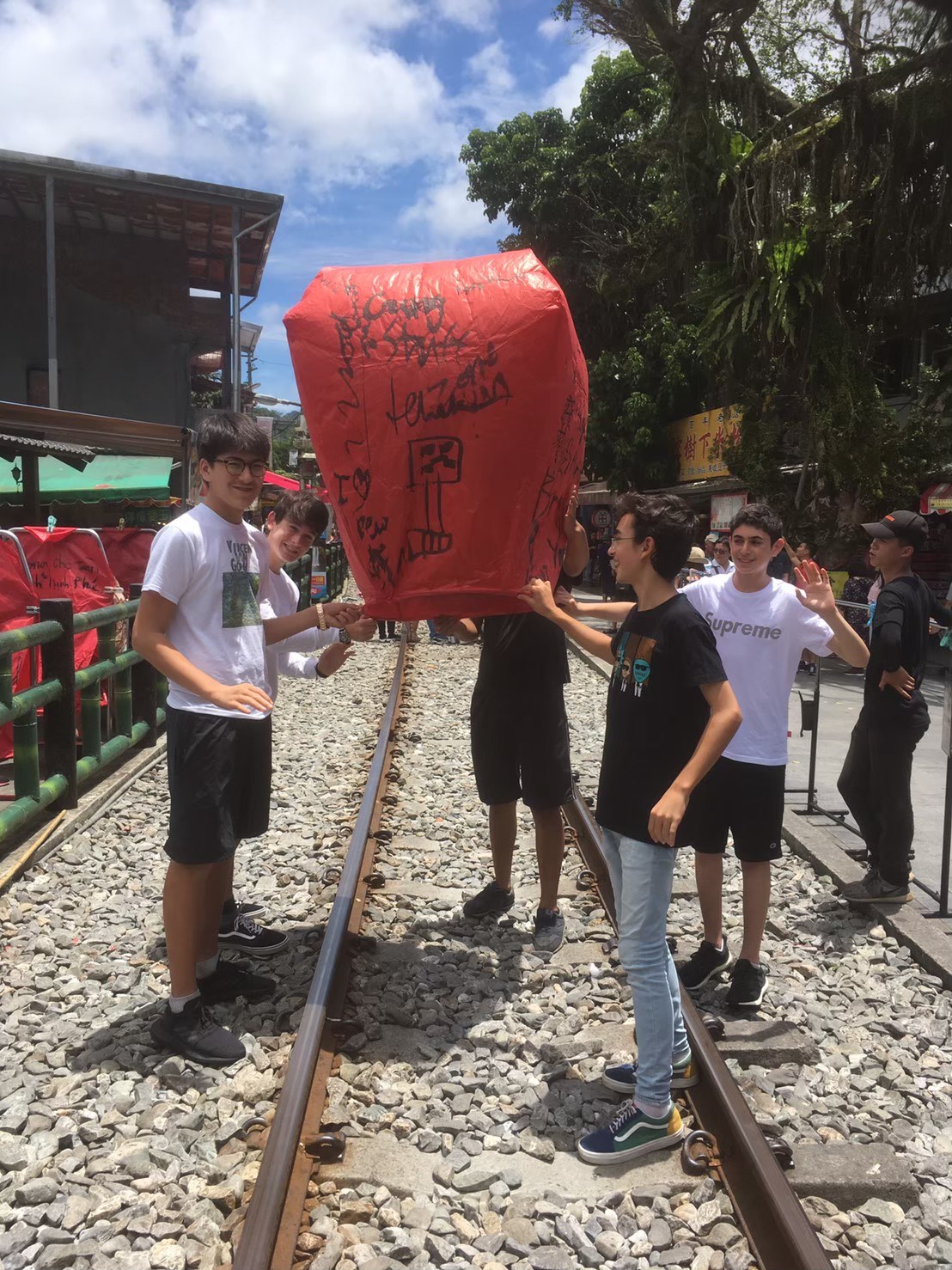
-
v
v
v
-
4-star or 5-star hotel in Taipei
Breakfast at Hotel
Check out and transfer for 1 day tour and departure
Morning: Hwashan 1914 Creative Park /SYNTREND Creative Park /HsinYi Shopping Area
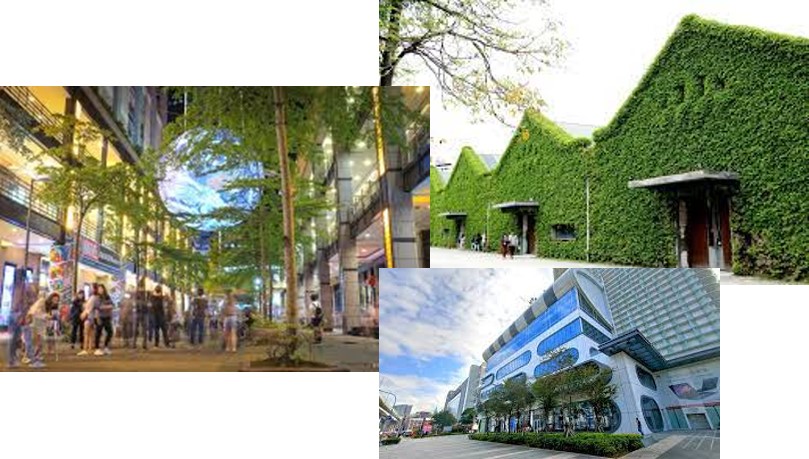
Afternoon:
Dahsi Old Street / Taoyuan Interntional Airport for Departure
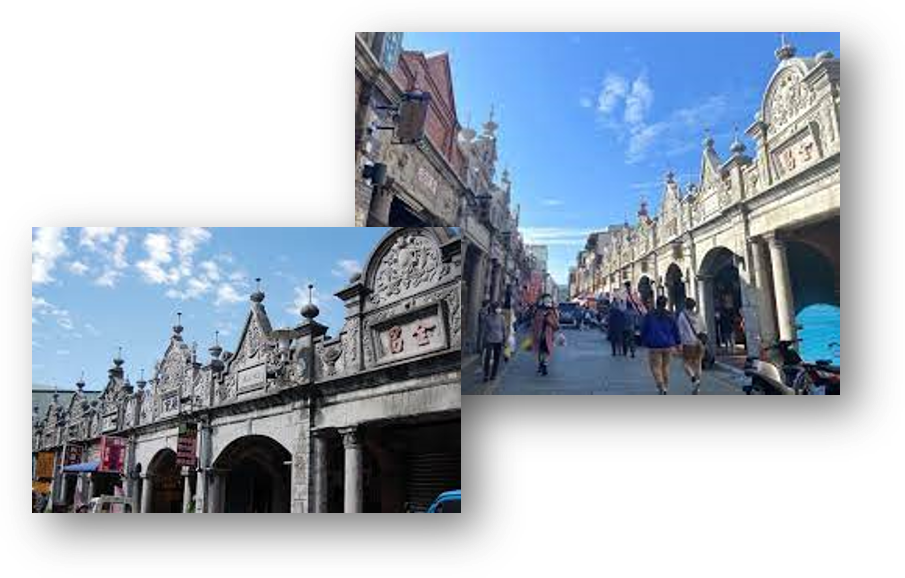
Hwashan 1914 Creation Park
Huashan 1914 Creative Park is located at the site of the former Taihoku Winery. The buildings here were constructed by the Japanese in 1914 as a sake plant and were later re-purposed as the Taihoku Winery. After the winery relocated in 1987, the plant remained as a museum of industrial building technology. Since 1999, this site has grown as a venue for art and cultural exhibitions and performances, as well as a place for artistic creation by individuals and organizations. The park is home to a number of restaurants, art galleries, cultural and creative stores, and performance venues. Exhibition and performance spaces are also available for rental, further making this a center of Taiwan's cultural and creative industry.
Daxi Old Street, Taoyuan
Daxi was the earliest developed area in Taoyuan. Thanks to small sailboats sailing between Dahan Creek and Tamsui River, Daxi had a thriving trade with China, and its prosperity brought success to many stores and businessmen. During the Japanese occupation period of the Taisho era, Baroque architecture was the popular building style and therefore many stores along Heping Road and Zhongshan Road were built in the Baroque style, but decorated with both Baroque ornamentation and characteristic totems of Min-nan in Southern China. On the facade of some old houses, auspicious Chinese fish and bat totems appear on Greek lintels or Roman columns, constituting a unique feature of Daxi. Because Heping Old Street was developed relatively later, the buildings in this area are better preserved. Specialty shops and food stands on the street always attract many tourists.
Other scenic attractions in the area include Daxi Bridge, Lee Teng-Fang Ancient Residence, Wude Temple, Daxi Wood Art Ecomuseum, etc. Daxi Old Street provides not only traditional Taiwanese toys, but also authentic must-try Taiwanese delicacies, including Daxi dried tofu, moonlight cakes, peanut caramel candies, tofu puddings, salty rice puddings and rice dumplings. When traveling in Taoyuan, be sure to visit Daxi Old Street, where you will experience the true Taiwanese flavor!
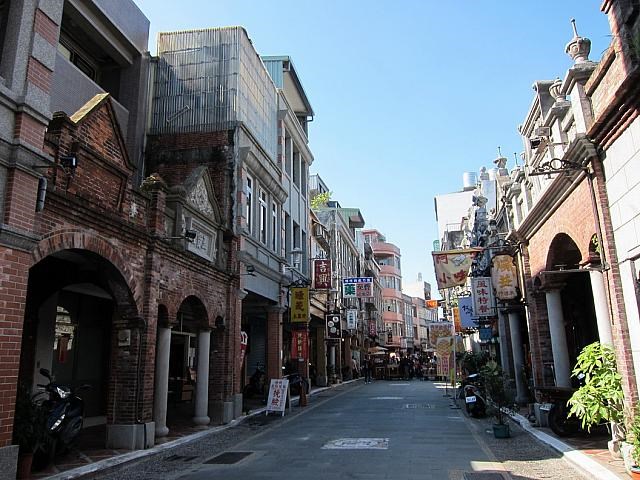
-
v
v
-
-
-
